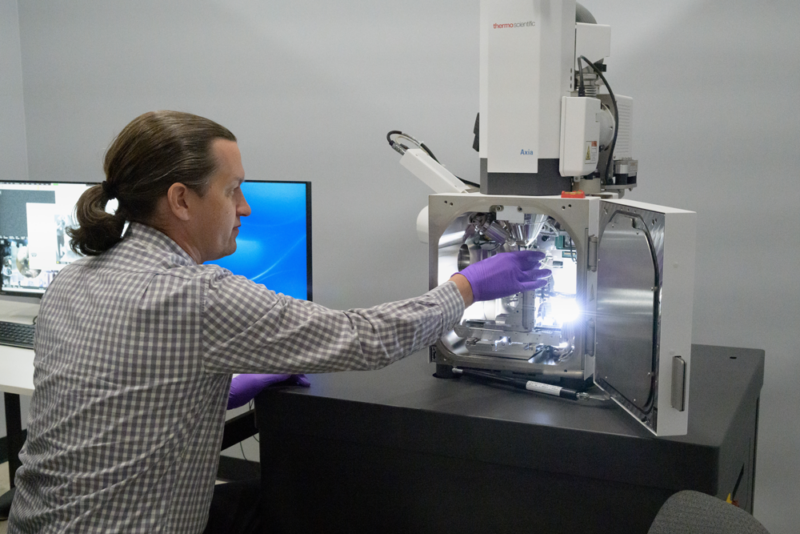Oxidation Paintings
In the summer of 2020, fluctuations in gallery climate triggered a chemical reaction in this painting that visibly changed its appearance. It’s a development that prompted a deceptively simple question: What happened? Thanks to a generous grant from the Bank of America Art Conservation Project, museum staff are hard at work finding answers. The examination and analysis of the Oxidation paintings in our collection will contribute to proper stewardship, preservation, and treatment of the nearly 100 other works worldwide.
Image Gallery
Watch: Origins of the Project
Museum staff including Amber Morgan, director of collections and exhibitions, Rikke Foulke, conservator of paintings, and Aaron Levi Garvey, chief curator, discuss Andy Warhol’s Oxidation series and the origins of the Bank of America Art Conservation Project.
A Field Trip to the Forensics Laboratory
In the field of paintings conservation, mockups are an essential tool to better understand the materials an artist has used and the techniques they have applied. Since original artworks cannot be used for testing, mockups act as stand-ins. There are many benefits to this approach. Primary among them is that a mockup can be subjected to rigorous conditions created to replicate the altered appearance of the original while preventing further damage to the artwork being studied.
In records, materials, and audiotapes from The Andy Warhol Museum’s archives, staff identified the materials and processes Warhol used to make his Oxidation paintings between 1977 and 1978. Museum staff procured vintage metal powders identical to the originals in golden and copper-toned alloys and acrylic medium of the same manufacturer to replicate paint that Warhol would have used in the Factory in the late 1970s. In August the newly made paint was applied to modern commercially prepared 8” x 8” canvases. Volunteers copied the oxidation process by consuming Vitamin B, as was done in the Factory, and then a pipette was used to apply drops of urine to the prepared canvases. In these photographs, you can look through the results. A select few were delivered to the RJ Lee Group, an industrial forensics analytical laboratory, for testing.
While museum staff await the results of the analysis by the scientists at RJ Lee Group, you can browse the image gallery below to learn more about this field trip to the forensics lab.
Image Gallery
Funding for the conservation of this artwork was generously provided through a grant from the Bank of America Art Conservation Project.











